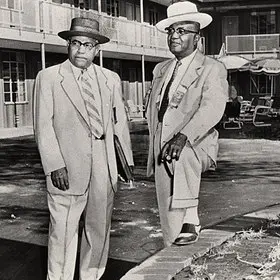Brent Leggs in The Art Newspaper: We Need Monuments Celebrating African American History
July 3, 2020

photo by: Nancy Pierce
Nina Simone's Childhood Home (a National Treasure) in Tryon, North Carolina.
Brent Leggs, executive director of the National Trust's African American Cultural Heritage Action Fund, has published a powerful op-ed in The Art Newspaper titled, "US needs monuments celebrating African American history, not Confederate statues."
Leggs' article from July 3, 2020, outlines how "telling America’s overlooked stories is fundamental to building a true national identity." He advocates for acknowledging the unvarnished history behind Confederate monuments and taking the opportunity to expand the conversation in bold, more inclusive ways. Of note:
"How should America preserve Confederate monuments so that we never forget their meaning and harm? What’s the role of the African American community, civic leaders, preservationists, artists and funders to envision landscapes of understanding and reconciliation? The purpose of preservation practice is not to stop change, but to offer tools that help a society manage change in ways that do not disconnect it from the legacy of its past. Done right, historic places can foster real healing, true equity and a validation of all Americans and their real history."
Read Leggs' full essay to learn more about the Action Fund; sites of Black resilience, activism, and achievement; and possible approaches that "represent the best in the human experience."



